#Mona Lisa Canvas Prints
Text

Mona Lisa sci fi
by studioslv
0 notes
Text
im watching Glass Onion and the Mona Lisa is on a canvas so my official theory is the Louvre DID sell the Mona Lisa to Bron but someone was like “this is a terrible idea” and switched it for a print confident that he wouldnt notice. and he didnt.
85 notes
·
View notes
Text
Ok so glass onion right????
Crazy good, crazy detailed, and just generally gorgeous??? Like the costume design, the set design, the acting, the everything. Aside from the amazing plot twist(s), Janelle Monáe, and the social commentary absolutely going for elon musk and to a lesser extent joe rogan’s throats, the attention to detail is just *chefs kiss*
The main thing I loved specifically though was the attention to detail about the mona lisa- for the record a highly overrated painting that at this point is just famous for being famous but I digress. So the mona lisa is painted on a wood panel which is a special kind of hell for conservation, which is already hard enough because the mona lisa has been stored in less than ideal conditions with some weird over-cleaning and lacquers and stuff(i am by no means an expert) but the main point is, the actual mona lisa is a lot darker/duller in person because of this. In the movie however, it’s noticeably lighter and more vibrant. Now, this alone isn’t really enough to say omg the louvre lent him a fake, BUT ~spoilers~ as it burns at the end you can clearly see the *canvas* not wood, *canvas* and cracking and peeling and you can see the burned wood underneath. So… the louvre didn’t even trust this man child with the real mona lisa. They gave him a nice print and said yeah, that’s good enough. Anyways if you stuck through this without having watched glass onion first pls watch it, it’s amazing
71 notes
·
View notes
Text
if you create, you're an artist
we're starting to write our teaching philosophies in my art education class rn so excuse me while i go on a little bit of a ramble
I am a firm believer in the fact that anyone can be an artist. If you find joy and purpose in what you make, congrats! You're an artist. I don't care if it's a huge realism painting that could rival the Mona Lisa, a crochet blanket project you made as a gift, a lopsided bowl you made in ceramics, or even a throwaway doodle on a napkin at a restaurant. If you made it, and you found joy in it, it's art in my eyes and you're an artist.
I've had family members try and argue with me that art is some magical talent people are born with and they'd never be able to obtain the level of skill that I'm at. I say "not with that attitude." I believe that with the right tools and access to learning, anyone can learn to create. You can learn to draw, to paint, to knit, or crochet. You can learn ceramics and sculpting. You can learn. It takes a lot of practice and time to become a "master" at it, but that's how any skill works. I didn't pop out of the womb holding a paint brush and pallete and immediately be able to produce fully rendered semi-realistic paintings like I can now. Hell, I couldn't even do that a few years ago! It took most of my life messing around and practicing to get anywhere near as good as I am now. And guess what? I'm still learning and practicing. But we all start somewhere. It's the passion to create and the tools made available to us that allow us to thrive and grow as artists.
Sure, to some extent I know that some people are able to see color in different ways or have a better imagination. But if you don't, that doesn't mean you can't do art. Literally everyone sees the world differently. Some people are more go-with-the-flow thinkers, while some are more analytical. Some people jump right into an art project with no plan, others plan things out down to every single brush stroke. Maybe that means you don't do art as a career, but that doesn't mean you're not an artist. You can be both a lawyer and an artist, a doctor and an artist, a mathematician and an artist, a cashier and an artist. You can be anything and an artist.
Another thing about art is how many options there are. Painting, ceramics, print making, jewelry making, sculpture, photography, digital art, knitting. The list goes on and within those categories, there's more categories! For example, painting can be broken down into so many different types of paint: oil, acrylic, watercolor, gauche, and probably more. But my point is, if one medium doesn't work for you, there's a ton more options to pick from. That's the beauty of art. Let's say you're really struggling with painting realism. Proportions and colors just are lining up the way you want. You can't get the right angle and nothing looks right. Well, before you throw everything down in frustration and quit all art forever... might I suggest photography? Using a camera would allow you to still play with angles and color (or even black and white) while keeping those proportions just the way you want. You could explore different lens types or mess around with film. It's a whole new medium to explore. Or if you want to give painting another shot, there's a way to take photos and make an exact copy of said photo using grid lines on to a canvas to keep those same proportions. And color mixing can be thought of like a science in a way.
Anyways, do you see what I'm getting at?
There's many different ways to approach the teaching of art to make it accessible and fun. So even if you think you can't do it, a good teacher will help you find a way that makes sense.
Art is so versatile and there's literally no wrong answers or any wrong way to do it. It's all subjective. It's all open ended. It's meant to be fun and a way for people to express themselves, connect to others, and communicate without even speaking a word. There's an infinite amount of ways to play with mediums in art. You can start whenever and however you want. With enough time and practice you can make what you want. And if you're hesitant to start on the grounds of thinking you're not an artist I'm here to tell you that you're wrong.
Anyone can be an artist.
#gilded.txt#🔥.txt#long post#can you tell what my favorite medium is?#it's painting lol#art teacher#art discussion#anyone can be an artist#make the thing you want to make#im so passionate about art and i just want people to create#please art is so beautiful and the creative process is such a wonderful thing#art is just so cool man#gilded talks art
13 notes
·
View notes
Text
Okay, but the Mona Lisa didn't even burn like canvas in Glass Onion. It burned like thick paper. It really was a print in a frame.
6 notes
·
View notes
Text
Thinking about the timing of Glass Onion and losing it like
(Below: Big Spoilers for Glass Onion. Like, end-of-the-movie big spoilers. Open at own risk.)
Okay, it’s set in 2020. I don’t remember if a year even came up for the first Knives Out, but it didn’t matter much either.
So we’re set a few months into the Pandemic. This is a great character establishing setting that I’ll get into in a sec. But pretty fast into the movie, this becomes a non-issue.
I didn’t think much about it until after the movie, but it is actually important that Glass Onion is set during Covid. Why?
Okay, back to square one: Character establishment. We open on our colorful cast of people Zoom Meeting-ing for work (Lionel, Claire), streaming for an audience (Duke, Whiskey, technically Claire), and Birdie holding a party of a solid 30+ people, all unmasked, all crammed into a tiny room with a fucking fire dancer guy wandering around to predictable results*.
*(! Just realized something! We’ll come back to this.)
And then we go to Blanc, our intrepid hero?, and he is sitting in his goddamn bathtub playing Among Us with a bunch of pals online. We can see the stacks of books and other entertainment he’s gone through during this time as the scene pans out. His husband is baking.
This is important not only as a change of tone (beyond Ms. Brand’s short intro), but marks Blanc as being very much the everyman character in comparison. This is, for people who didn’t live through the hell of being an “”essential worker”“, a fairly relatable experience.
Then we get to the dock and we get an absolutely fantastic character establishment setup Again, with Blanc in his fitted, functional mask, Lionel and Peg in their medical masks of different calibers, Claire in a cloth mask that she doesn’t quite pull up right, Birdie in her fucking glamor net, and Duke and Whiskey in no masks at all and being equally careless with everyone else’s health.
And then we get the employee rolling up with the mystery gun that, apparently, just makes people immune to Covid in one shot?
This is useful for the following flow of the movie, where the pandemic is a sidenote at best, but it’s also a crucial establishing shot in a very different way:
Miles Bron is a fucking jackass.
2-3 months into what will be an incredibly deadly pandemic and he just happens to roll up with a blatant perfect Covid vaccine (or implied to be, given how the movie goes I think they should fuckin worry about that! Also Blanc being the only one bothering to ask what it is in the first place!!). A perfect vaccine for his buddies, and no one else.
This dude could, if this shot actually does what’s implied, cure the global pandemic on at least some level and this plot point never comes up again for the rest of the movie.
This is an incredible character establishment, and what with the Red Death setup, the puzzle box, and Brand’s response thereof, we actually get a pretty comprehensive character profile of Miles Bron before he ever appears on screen. An entitled, selfish asshole who cares only about entertaining himself (in the company of people he knows only care about him for his money, and later we find out he knows that they can, and will, stab a friend in the back for that cash), even though he clearly has the resources to help others.
The last mention we get of the pandemic in any way (chronologically, it does come up in the flashback) is his comment about why he apparently has the Mona Goddamn Lisa in his living room.
The Louvre has no tourists and France apparently needed a loan, so he gets the ML for collateral*.
*There’s a post going around about how the Mona Lisa is not painted on canvas, but Bron’s copy is, so he probably got a print rather than the real deal.
This is the point at the movie where the Pandemic setting appears to fade out. It gets to the point where I was wondering if we really needed to set this in 2020/during Covid specifically.
But you know what?
Our movie (big spoilers) ends with the destruction of said Mona Goddamn Lisa, by dint of Elon Musk’s Miles Bron’s egotistical idiocy. The pieces are all laid out neatly, we can see it coming to an extent (I got slightly spoiled by Tumblr posts so I can’t say for sure).
Bron is going to lose every investor, every cent in his stocks, every deal he ever cut, everyone who ever thought he was cool, because he fucked up this badly. Because his wonder fuel was exactly as unstable and deadly as everyone had been warning him for months if not years.
And it torched the Mona Lisa.
The Mona Lisa he had, that (if it were the real deal) would not have been missed immediately, because there was no one in the Louvre.
Because there’s a pandemic just getting started.
The way these movies tie everything up in a bow, foreshadow the end and reference the beginning so neatly, is just amazing to watch.
(Also I just here realized that Birdie’s party with its blatant fire hazard ending predictably is foreshadowing for the exact same thing to happen to Bron because they’re both incautious egotists wow!)
6 notes
·
View notes
Text
Fine Art
Fine art encompasses a range of artistic disciplines and styles typically valued for their aesthetic qualities and intellectual stimulation rather than their functional use. Here’s a closer look at fine art, its main categories, notable artists, and key concepts:
1. Key Categories of Fine Art
Painting: Creating visual works using pigments on surfaces such as canvas, paper, or wood. Major styles include realism, impressionism, abstract, and surrealism. Notable painters include Leonardo da Vinci, Vincent van Gogh, and Frida Kahlo.
Sculpture: Three-dimensional artworks made from materials like stone, metal, wood, or clay. Famous sculptors include Michelangelo, Auguste Rodin, and Henry Moore.
Drawing: The act of creating images on paper or another surface using pencils, charcoal, ink, or other media. Prominent drawers include Albrecht Dürer and Rembrandt.
Printmaking: Techniques for creating artworks by printing, typically on paper. Common methods include etching, lithography, and screen printing. Artists in this field include Francisco Goya and Andy Warhol.
Photography: Capturing images using light-sensitive materials or digital sensors. Influential photographers include Ansel Adams, Cindy Sherman, and Dorothea Lange.
Mixed Media: Combining various artistic materials and techniques in a single artwork. This can include a mix of painting, drawing, collage, and found objects. Notable mixed media artists include Robert Rauschenberg and Joseph Cornell.
2. Major Art Movements
Renaissance (14th-17th Century): Marked by a revival of classical learning and a focus on naturalism. Key figures include Leonardo da Vinci, Michelangelo, and Raphael.
Baroque (17th-18th Century): Known for dramatic use of light and shadow, rich colors, and emotional intensity. Notable artists include Caravaggio and Rembrandt.
Romanticism (late 18th-19th Century): Emphasized emotion, individualism, and nature. Key artists include J.M.W. Turner and Eugène Delacroix.
Impressionism (19th Century): Focused on capturing the effects of light and color with loose brushwork. Famous artists include Claude Monet and Edgar Degas.
Expressionism (20th Century): Emphasized emotional experience rather than physical reality. Key figures include Edvard Munch and Egon Schiele.
Surrealism (20th Century): Explored the unconscious mind and dream imagery. Notable artists include Salvador Dalí and René Magritte.
Abstract Expressionism (mid-20th Century): Focused on spontaneous, automatic, or subconscious creation. Prominent artists include Jackson Pollock and Mark Rothko.
3. Notable Fine Art Institutions
The Louvre (Paris): Home to some of the world’s most famous artworks, including the Mona Lisa by Leonardo da Vinci.
The Metropolitan Museum of Art (New York City): Offers a vast collection of art from different cultures and time periods.
The Tate Modern (London): Focuses on modern and contemporary art, featuring works by artists like Pablo Picasso and Andy Warhol.
The Getty Center (Los Angeles): Known for its impressive collection of European paintings and sculptures, as well as its conservation efforts.
4. Collecting and Market Trends
Art Auctions: Major auction houses like Sotheby’s and Christie’s play a significant role in the fine art market, often setting records for high-value works.
Art Fairs: Events like Art Basel and The Armory Show are crucial for showcasing and buying contemporary and fine art.
Private Collections: Many high-profile collectors and philanthropists contribute to the fine art world by acquiring and donating significant pieces.
5. Art Education and Appreciation
Art Schools: Institutions like the School of the Art Institute of Chicago (SAIC) and the Royal College of Art offer specialized training in fine art.
Art History: Understanding the historical context and evolution of art movements is crucial for appreciating and interpreting fine art.
Art Criticism: Engaging with critical reviews and essays helps deepen understanding of artworks and artists.
6. Contemporary Trends
Conceptual Art: Emphasizes the idea or concept behind the work rather than its physical form. Notable contemporary artists include Damien Hirst and Jenny Holzer.
Digital Art: Incorporates digital technology as a medium or tool, including digital painting, video art, and interactive installations.
Social and Political Commentary: Many contemporary artists address current social, political, and environmental issues through their work.
Fine art encompasses a range of artistic disciplines and styles typically valued for their aesthetic qualities and intellectual stimulation rather than their functional use. Here’s a closer look at fine art, its main categories, notable artists, and key concepts:
1. Key Categories of Fine Art
Painting: Creating visual works using pigments on surfaces such as canvas, paper, or wood. Major styles include realism, impressionism, abstract, and surrealism. Notable painters include Leonardo da Vinci, Vincent van Gogh, and Frida Kahlo.
Sculpture: Three-dimensional artworks made from materials like stone, metal, wood, or clay. Famous sculptors include Michelangelo, Auguste Rodin, and Henry Moore.
Drawing: The act of creating images on paper or another surface using pencils, charcoal, ink, or other media. Prominent drawers include Albrecht Dürer and Rembrandt.
Printmaking: Techniques for creating artworks by printing, typically on paper. Common methods include etching, lithography, and screen printing. Artists in this field include Francisco Goya and Andy Warhol.
Photography: Capturing images using light-sensitive materials or digital sensors. Influential photographers include Ansel Adams, Cindy Sherman, and Dorothea Lange.
Mixed Media: Combining various artistic materials and techniques in a single artwork. This can include a mix of painting, drawing, collage, and found objects. Notable mixed media artists include Robert Rauschenberg and Joseph Cornell.
2. Major Art Movements
Renaissance (14th-17th Century): Marked by a revival of classical learning and a focus on naturalism. Key figures include Leonardo da Vinci, Michelangelo, and Raphael.
Baroque (17th-18th Century): Known for dramatic use of light and shadow, rich colors, and emotional intensity. Notable artists include Caravaggio and Rembrandt.
Romanticism (late 18th-19th Century): Emphasized emotion, individualism, and nature. Key artists include J.M.W. Turner and Eugène Delacroix.
Impressionism (19th Century): Focused on capturing the effects of light and color with loose brushwork. Famous artists include Claude Monet and Edgar Degas.
Expressionism (20th Century): Emphasized emotional experience rather than physical reality. Key figures include Edvard Munch and Egon Schiele.
Surrealism (20th Century): Explored the unconscious mind and dream imagery. Notable artists include Salvador Dalí and René Magritte.
Abstract Expressionism (mid-20th Century): Focused on spontaneous, automatic, or subconscious creation. Prominent artists include Jackson Pollock and Mark Rothko.
3. Notable Fine Art Institutions
The Louvre (Paris): Home to some of the world’s most famous artworks, including the Mona Lisa by Leonardo da Vinci.
The Metropolitan Museum of Art (New York City): Offers a vast collection of art from different cultures and time periods.
The Tate Modern (London): Focuses on modern and contemporary art, featuring works by artists like Pablo Picasso and Andy Warhol.
The Getty Center (Los Angeles): Known for its impressive collection of European paintings and sculptures, as well as its conservation efforts.
4. Collecting and Market Trends
Art Auctions: Major auction houses like Sotheby’s and Christie’s play a significant role in the fine art market, often setting records for high-value works.
Art Fairs: Events like Art Basel and The Armory Show are crucial for showcasing and buying contemporary and fine art.
Private Collections: Many high-profile collectors and philanthropists contribute to the fine art world by acquiring and donating significant pieces.
5. Art Education and Appreciation
Art Schools: Institutions like the School of the Art Institute of Chicago (SAIC) and the Royal College of Art offer specialized training in fine art.
Art History: Understanding the historical context and evolution of art movements is crucial for appreciating and interpreting fine art.
Art Criticism: Engaging with critical reviews and essays helps deepen understanding of artworks and artists.
6. Contemporary Trends
Conceptual Art: Emphasizes the idea or concept behind the work rather than its physical form. Notable contemporary artists include Damien Hirst and Jenny Holzer.
Digital Art: Incorporates digital technology as a medium or tool, including digital painting, video art, and interactive installations.
Social and Political Commentary: Many contemporary artists address current social, political, and environmental issues through their work.
Fine art encompasses a range of artistic disciplines and styles typically valued for their aesthetic qualities and intellectual stimulation rather than their functional use. Here’s a closer look at fine art, its main categories, notable artists, and key concepts:
1. Key Categories of Fine Art
Painting: Creating visual works using pigments on surfaces such as canvas, paper, or wood. Major styles include realism, impressionism, abstract, and surrealism. Notable painters include Leonardo da Vinci, Vincent van Gogh, and Frida Kahlo.
Sculpture: Three-dimensional artworks made from materials like stone, metal, wood, or clay. Famous sculptors include Michelangelo, Auguste Rodin, and Henry Moore.
Drawing: The act of creating images on paper or another surface using pencils, charcoal, ink, or other media. Prominent drawers include Albrecht Dürer and Rembrandt.
Printmaking: Techniques for creating artworks by printing, typically on paper. Common methods include etching, lithography, and screen printing. Artists in this field include Francisco Goya and Andy Warhol.
Photography: Capturing images using light-sensitive materials or digital sensors. Influential photographers include Ansel Adams, Cindy Sherman, and Dorothea Lange.
Mixed Media: Combining various artistic materials and techniques in a single artwork. This can include a mix of painting, drawing, collage, and found objects. Notable mixed media artists include Robert Rauschenberg and Joseph Cornell.
2. Major Art Movements
Renaissance (14th-17th Century): Marked by a revival of classical learning and a focus on naturalism. Key figures include Leonardo da Vinci, Michelangelo, and Raphael.
Baroque (17th-18th Century): Known for dramatic use of light and shadow, rich colors, and emotional intensity. Notable artists include Caravaggio and Rembrandt.
Romanticism (late 18th-19th Century): Emphasized emotion, individualism, and nature. Key artists include J.M.W. Turner and Eugène Delacroix.
Impressionism (19th Century): Focused on capturing the effects of light and color with loose brushwork. Famous artists include Claude Monet and Edgar Degas.
Expressionism (20th Century): Emphasized emotional experience rather than physical reality. Key figures include Edvard Munch and Egon Schiele.
Surrealism (20th Century): Explored the unconscious mind and dream imagery. Notable artists include Salvador Dalí and René Magritte.
Abstract Expressionism (mid-20th Century): Focused on spontaneous, automatic, or subconscious creation. Prominent artists include Jackson Pollock and Mark Rothko.
3. Notable Fine Art Institutions
The Louvre (Paris): Home to some of the world’s most famous artworks, including the Mona Lisa by Leonardo da Vinci.
The Metropolitan Museum of Art (New York City): Offers a vast collection of art from different cultures and time periods.
The Tate Modern (London): Focuses on modern and contemporary art, featuring works by artists like Pablo Picasso and Andy Warhol.
The Getty Center (Los Angeles): Known for its impressive collection of European paintings and sculptures, as well as its conservation efforts.
4. Collecting and Market Trends
Art Auctions: Major auction houses like Sotheby’s and Christie’s play a significant role in the fine art market, often setting records for high-value works.
Art Fairs: Events like Art Basel and The Armory Show are crucial for showcasing and buying contemporary and fine art.
Private Collections: Many high-profile collectors and philanthropists contribute to the fine art world by acquiring and donating significant pieces.
5. Art Education and Appreciation
Art Schools: Institutions like the School of the Art Institute of Chicago (SAIC) and the Royal College of Art offer specialized training in fine art.
Art History: Understanding the historical context and evolution of art movements is crucial for appreciating and interpreting fine art.
Art Criticism: Engaging with critical reviews and essays helps deepen understanding of artworks and artists.
6. Contemporary Trends
Conceptual Art: Emphasizes the idea or concept behind the work rather than its physical form. Notable contemporary artists include Damien Hirst and Jenny Holzer.
Digital Art: Incorporates digital technology as a medium or tool, including digital painting, video art, and interactive installations.
Social and Political Commentary: Many contemporary artists address current social, political, and environmental issues through their work.
business, forex, art, usbiz, usa art, fine art, trading, forex trading
1 note
·
View note
Photo

Funny Bathroom Toilet Poster Mona Lisa and Wearing Pearls Girl with Roll Paper Canvas Prints Posters Home Toilet Wall Art Decor Remind our customers about something Important:1. The painting is not handpainted, it is printed by machine.2. The painting without white borderreserved, if you need please leave message or contact with us before you place the order.3. This is unframed canvas rolled.4. If you need custom sizes, please contact us.5. The posters are packed in a plastic PVC tube, We protect safety.6. As the different lighting effects between computer monitors, cell phone, the color of objects maybe a little different from pictures.7.Material:Cotton Canvas PrintingTasteless High quality posterDurable fabric (much better than a regular poster)Waterproof and non-fading fabricSupport Drop Shipping and Whosesale .product show:buyers show: https://iced-drip.top/product/funny-bathroom-toilet-poster-mona-lisa-and-wearing-pearls-girl-with-roll-paper-canvas-prints-posters-home-toilet-wall-art-decor/?utm_source=tumblr&utm_medium=social&utm_campaign=ReviveOldPost
0 notes
Text
Aura Versus Accessibility - Reproduced Artwork
assignment 2

image from Curina.co
With a simple Google search, you can find yourself a printable version of any Van Gogh painting for your home. There’s no need to travel to MoMA or the Louvre Museum to see iconic artworks, instead you can just purchase them and enjoy them from the comfort of your own couch.
But, after framing and hanging this reproduced piece of art, we understand that this is definitely not the same as the authentic piece of work that we may know and love - it looks the same, may even be scaled to the same size, but something is off. According to Walter Benjamin, what we are lacking with our Google-downloaded print file is the aura of the original artwork.
Behind any highly valued artwork is the intention put in by the artist. For example, sticking to Van Gogh, that intention could’ve been his brush strokes on a canvas. Other intentions could be in location, in scale, in immersiveness, etc. Reproducing an artwork displaces its aura.
By displacing an aura, the original traditional artwork does not lose its value. The Starry Night is still the Starry Night, despite the fact that college dorms all over the world have it hanging in their entryways. There’s a reason that people flock to The Museum of Modern Art to experience the piece in person. The surreal feeling of its aura continuously brings people in and for this reason, no amount of reproduction can devalue the original painting.
Walter Benjamin states that the mechanical reproduction of an artwork changes its cultural context. This is true and this can pinpoint where we lose the aura - the Mona Lisa in your kitchen is not contextually the same as the Mona Lisa at the Louvre. It’s safe to say that the experience has a large factor on the aura of an artwork. The cultural value we place on these artists and artworks help to build up this immense respect we have for the original pieces. So, this culturally (and even socially) constructed value surrounding the artworks is what differentiates the original piece from its reproduction, and also the reason why reproductions are even deemed acceptable. To grow so much respect and desire for pieces of artwork to the extent that they are so widely accessible demonstrates the value of the original pieces. As Walter Benjamin states the original piece does not lose its “uniqueness” but of course the value of the reproduction is far lower.
I’d even argue that reproductions of artworks further the desire to see the original pieces in person. We see a version of a reproduction of artwork when we look at a high-res image of that artwork on our computer screens. We learn about art and the cultural context of it and once we finally see it in its entirety, it’s an entirely different experience. I’ve never seen the Mona Lisa in person but I have a clear image in my head of what it looks like - this is due to the accessibility of it. People explain the surrealness of seeing it in person, even how “her eyes follow you.” Can we say that if the Mona Lisa was just explained and the only way to see it was to travel to Paris, that it would be valued as much? I think the engraved image in our minds of the painting combined with the high cultural value we place on it create this desire to see it in person and experience its aura for ourselves. Without the accessibility aspect, learning about it could diminish the desire (at least for a visual learner) to see it in person.
0 notes
Text

Mona Lisa modern woman
by studioslv
0 notes
Text
Modern Graffiti Art Mona Lisa Canvas Painting Poster
Modern Graffiti Art Mona Lisa Canvas Painting Poster
Please Note:
1.We support Drop Shipping and Whosesale.
2. To keep down the shipping costs and aviod the damaged on shipping way, no mat, No Frame, Canvas Only.
3.The painting is not handpainted, it is printed by machine.
4.1inch=2.54cm
5. we acceptcustom sizes and pictures, if you want, pls contact with us.
6.The expected delivery date will be affected by customs, weather etc., sometimes it may…
View On WordPress
0 notes
Photo

Mona Lisa Framed Printed Canvas https://www.instagram.com/p/Cj_E4JAjhW0/?igshid=NGJjMDIxMWI=
0 notes
Text
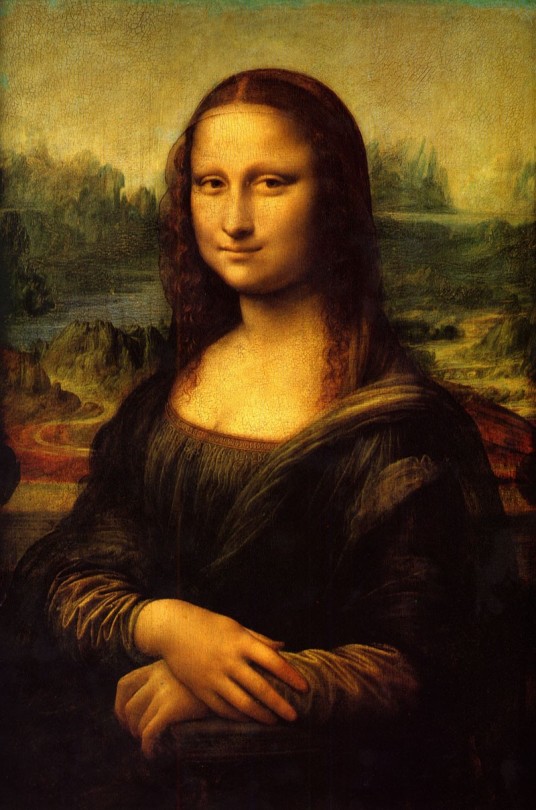
Home Decor Wall Art Canvas Painting Wall Pictures for Living Room Mona Lisa Canvas Prints Wall Painting Posters
#Wall Art Canvas Painting#Wall Pictures for Living Room#Mona Lisa Canvas Prints#Wall Painting Posters#Home Decor#lailaenterprise
9 notes
·
View notes
Photo

LEONARDO DA VINCI MONA LISA, C.1507 giclee print CANVAS WALL ART Pure Hand Painted ON CANVAS OIL PAINTING WALL PAINTING PICTURES
#leonardo#vinci#mona#lisa#c.1507#giclee#print#canvas#wall#art#pure#hand#painted#oil#painting#pictures#home#garden
0 notes
Photo
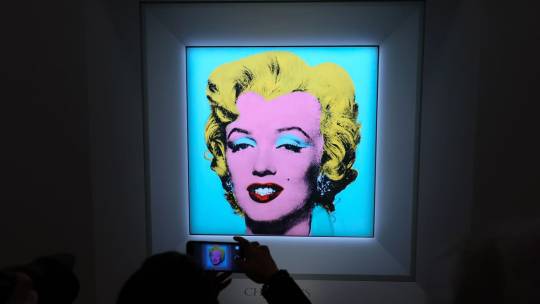


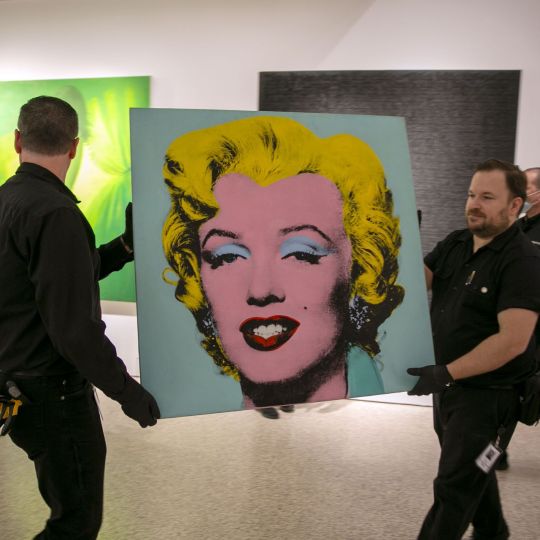
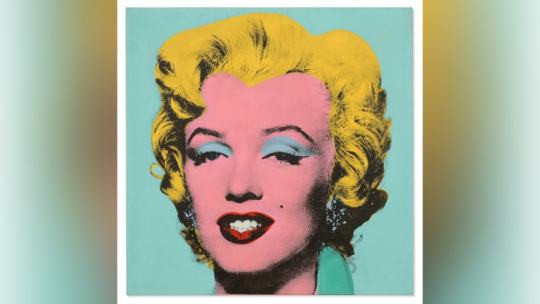

Andy Warhol's 1964 Portrait of Marilyn Monroe Sells a $195 Million
One of Andy Warhol's iconic Marilyn Monroe portraits has become the most expensive 20th-century artwork ever to go under the hammer.
The 40-square-inch "Shot Sage Blue Marilyn," one of dozens of images the artist made of Monroe in the 1960s, sold for a record $195 million at Christie's in New York Monday evening.
Prior to the sale, Christie's had described "Shot Sage Blue Marilyn" as "one of the rarest and most transcendent images in existence." It has previously been shown at galleries including the Guggenheim Museum in New York, the Centre Pompidou in Paris and London's Tate Modern.
The auction house had initially said it was expecting bids "in the region of" $200 million.
Warhol's colorful reproductions of Monroe's photo portrait -- originally a publicity still from her 1953 movie "Niagara" -- are among his most recognizable works, alongside his signature paintings of Campbell's soup cans.
Using a technique called silkscreen printing, which duplicates images on paper or canvas using a layer of fine-mesh silk like a stencil, he began creating them in 1962, shortly after Monroe's death. As with his depictions of other famous figures, including Elvis Presley and Chinese leader Mao Zedong, the Pop artist created numerous versions of Monroe's portrait in various different colors and configurations.
Among the best-known is "Marilyn Diptych," owned by British gallery group Tate, which saw Warhol print a grid of 50 portraits across two canvases. Elsewhere, the Museum of Modern Art's "Gold Marilyn Monroe" features a single image printed against a gold background, while "Shot Marilyns" saw the artist shooting portraits of the star through the head with bullets.
In 1964, he developed a "more refined and time-intensive" new process that was "antithetical to the mass production he was best known for," according to Christie's. That year, he used it to create a limited number of portraits -- a rare group of works to which "Shot Sage Blue Marilyn" belongs -- before abandoning the technique.
While a handful of paintings are thought to have attracted price tags in excess of $200 million in private sales (including works by the Abstract Expressionist painters Willem de Kooning and Jackson Pollock), the feat has only once been achieved at auction -- by Leonardo da Vinci's "Salvator Mundi," which in 2017 sold for over $450 million. The previous auction record for a 20th-century painting was the $179.4 million paid for Pablo Picasso's "Les Femmes d'Alger (Version O)" in 2015.
The auction record for a Warhol work was previously held by "Silver Car Crash (Double Disaster)," which depicts the mangled aftermath of a road collision and sold for more than $105 million almost a decade ago. Several of the artist's other Marilyn images have also attracted huge sum at auction in recent years, with 1962's "White Marilyn" selling for $41 million in New York in 2014.
"Shot Sage Blue Marilyn," meanwhile, was owned by a succession of high-profile gallerists and collectors before being purchased by the late Swiss art dealer Thomas Ammann. The portrait was offered for auction by the Thomas and Doris Ammann Foundation Zurich, the charitable organization set up in his (and his sister's) name, which will use the proceeds to fund health and education programs for children worldwide, according to a press release.
n a press statement prior to the sale, Christie's chairman of 20th and 21st century art, Alex Rotter, described the work as "the absolute pinnacle of American Pop" and "the most significant 20th century painting to come to auction in a generation."
"Standing alongside Botticelli's 'Birth of Venus,' Da Vinci's 'Mona Lisa' and Picasso's 'Les Demoiselles d'Avignon,' Warhol's 'Marilyn' is categorically one of the greatest paintings of all time," he added.
The artwork was one of four Warhols in the Ammanns' collection on sale at Monday evening's auction. One of his famous "Flowers" silkscreen paintings went for $15.8 million, and "GE/Skull," which he created in collaboration with the late Jean-Michel Basquiat, fetched over $4.6 million. Warhol's sculpture "Heinz Tomato Ketchup Box" meanwhile sold for more than $478,000.
Elsewhere, works by Robert Ryman, Alberto Giacometti and Lucian Freud also went under the hammer. Two of the biggest sellers were paintings by American artist Cy Twombly, "Untitled" and "Venere Sopra Gaeta," which fetched $21 million and almost $17 million respectively.
#Andy Warhol's 1964 Portrait of Marilyn Monroe Sells a $195 Million#Shot Sage Blue Marilyn#American artist film director and producer#art#artist#art work#art news#luxury#luxury goods#luxury living#luxury lifestyle#billionaire#billionaire lifestyle#Christie's#painting#auction#marilyn monroe
29 notes
·
View notes
Text
Post Modern Art
Escaping Confines of Museum

City, Michael Heizer. Located in Garden Valley, a desert valley in rural Lincoln County in the U.S. state of Nevada. land art sculpture. 1970-2022
Collapsing Boundaries Between High and Low

Curious Kitten watercolor painting is a painting by Svetlana Novikova which was uploaded on February 23rd, 2013.
Rejecting Originality

Andy Warhol 1928–1987. Silkscreen ink and acrylic paint on 2 canvases. 1982
Jouissance
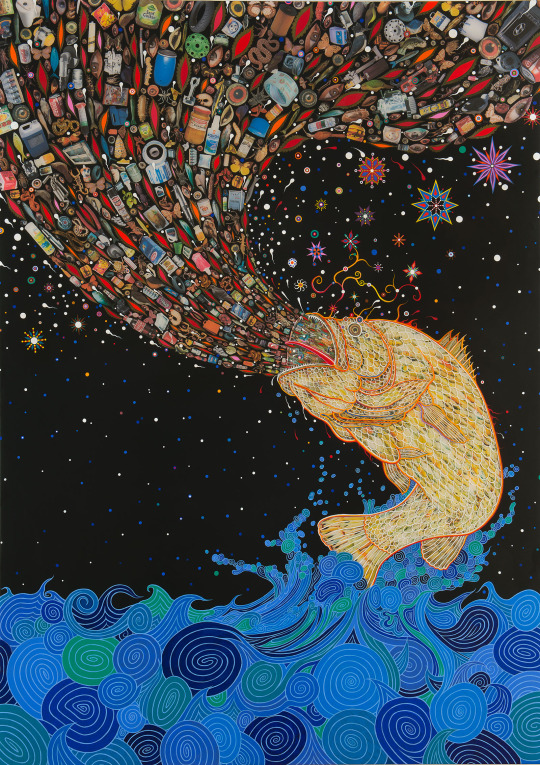
Fred Tomaselli, 2014, 60″ x 84″, photo-collage, leaves, acrylic and resin on wood panel, © 2014, courtesy of James Cohan Gallery and the artist
Working Collaboratively
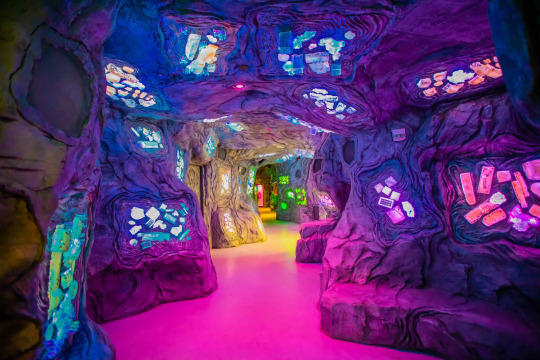
Meow Wolf. Sept. 13, 2021.
Adam Christopher
Andi Todaro
Ashley Frazier, Michael Sperandeo
Brandan Styles "Bzurk”, Ellie Rusinova
Brian Corrigan
Cal Duran, David Ocelotl Garcia
Cami Galofre
Chris Bagley
Christopher Owen Nelson
Christopher Short
Collin Parson
Corrina Espinosa
Dan Taro
David Farquharson
Dice 51
Douglas A. Schenck “DAS”
Dylan Gebbia-Richards
Frankie Toan
Ian McKenna
Jaime Molina, Pedro Barrios
Jennifer Pettus
Jess Webb
Jodi Stuart, Libby Barbee
Joseph Lamar
Joshua Goss
JUHB.
Justin Camilli
Justin Gitlin aka Cacheflowe
Kalyn Heffernan, Gregg Ziemba
Katy Zimmerman, Erika Wurth
Kia Neill
Kristin Stransky
Laaiaim Mayer
Lauri Lynnxe Murphy
LORDSCIENCE UNIVERSAL
Lumonics
Marjorie Lair, Kyle Vincent Singer
Maya Linke
Myah Sarles
Nicole Banowetz
Nolan Tredway
Ramón Bonilla
Reed Fox, Ben Weirich
Sabin Aell, Randy Rushton
Scott Hildebrandt
Sean Peuquet
Shayna Cohn
Sigrid Sarda
Sofie Birkin
Thomas Scharfenberg
Viviane Le Courtois
Wanderweird
Wynn Earl Buzzell Jr.
Andrew Novick, Pamela Webb, Robert Ayala
bearwarp
Chad Colby, Lexis Loeb, Hayley Kirkman
Charles Kern, Ty Holter, Ben Jackson, Rachel Bilys, Brett Sasine
Demiurge LLC: Joe Riche and Wynn Buzzell
Eriko Tsogo, Jennifer Tsogo, Tsogo Mijid, Batochir Batkhishig
F. Ria Khan, Armon Naein, Blake Gambel, Calvin Logan, Charles Candon, Harrison Bolin, Luke Collier, Maria Deslis, Sky Johnson, Sofia Rubio-Topete
Ladies Fancywork Society
Merhia Wiese, Annabelle Wiese, Maggie Wiese, Eunseo Zoey Kim, Dan Griner
Mike Lustig, Mitch Hoffman, Tim Omspach, Nathan Koral, Evan Beloni, Ryan Elmendorf, Scott Wilson, Charlis Robbins
Molina Speaks, Stevon Lucero, DJ Icewater, Felix "Fast4ward" Ayodele, Diles, Emily Swank
Oren Lomena, Alaine "Skeena" Rodriguez, Alius Hu
Peniel Apantenco, Kim Shively, Colin Richard Ferguson Ward, (In memoriam)
Sam Caudill, Sean Louis Rove, Juancristobal Hernández
Secret Love Collective: Katy Batsel, Lares Feliciano, Colby Graham, Piper Rose, Frankie Toan, Katy Zimmerman, Lauren Zwicky, Genevieve Waller
The Church of Many: Andrea Thurber, Elsa Carenbauer, Anna Goss, Maddi Waneka and Emily Merlin
Waffle Cone Club: Kyle Vincent Singer, Scott Kreider, Marjorie Lair
Everything is Terrible!
Kevin Bourland
Michael Lujan
Moment Factory
Nina Mastrangelo
Scott Geary, Wayne Geary, Gary Ashkin
Appropriating
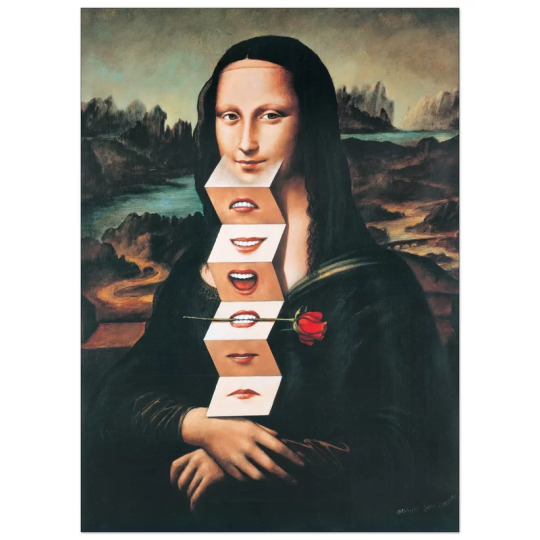
Paneel "Rehearsal for an Icon 2001 - Mona Lisa" von Olbinski, Grafikdruck. Digital Print
Hybridizing
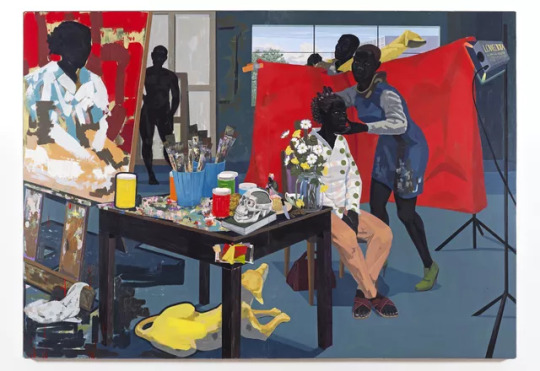
Untitled (Studio)2014
Kerry James Marshall
Simulating

Andy Warhol
(American, 1928–1987) 1962. Synthetic polymer paint on thirty-two canvases, Each canvas 20 x 16" (50.8 x 40.6 cm). Overall installation with 3" between each panel is 97" high x 163" wide
Mixing Media
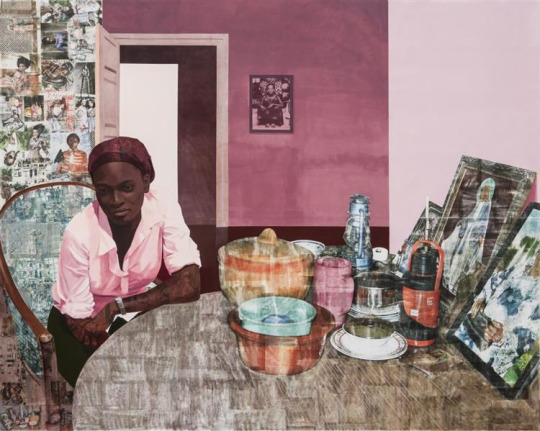
Mama, Mummy and Mamma (Predecessors #2)
Njideka Akunyili Crosby. 2014
Layering

Zephyrus Rising, 2022. Acrylic on Acrylic. 32 × 16 × 22 in Duncan McDaniel
Mixing Codes
Recontextualizing

Leonardo da Vinci’s Mona Lisa, 1503-6; On Winnie: Denis Colomb stoles (worn as a headdress, top and sleeves)
Confronting the Gaze
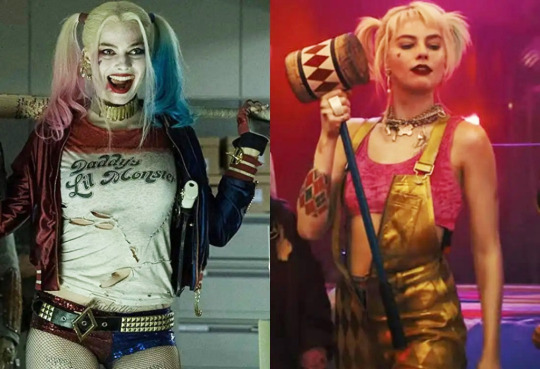
Harley Quinn in Suicide Squad David Ayer 2016 (left), Harley Quinn in Birds of Prey Cathy Yann 2021 (right)
Facing Abject

Jane Alexander, Butcher Boys, 1985/86, mixed media (Iziko South African National Gallery, Cape Town, photo: Goggins World, CC BY-NC-ND 2.0)
Constructing Identities
Creating Metaphors

Martin Puryear. Ladder for Booker T. Washington, detail, 1996. Installation view at the Modern Art Museum of Fort Worth, Texas. 2003
Using Narratives

Damien Hirst
The Physical Impossibility of Death in the Mind of Someone Living, 2013 Lentikulardruck80 x 120 cm
Irony, Parody, Parody Dissonance
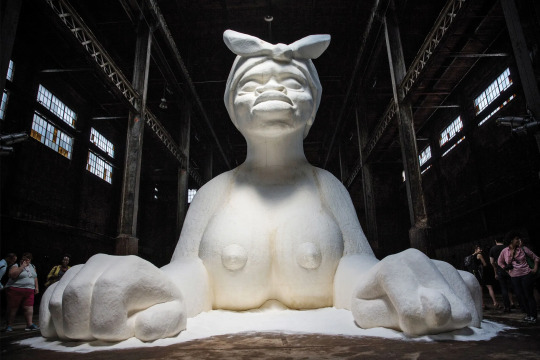
A Subtlety, or the Marvelous Sugar Baby (2014). Kara Walker Photo: Andrew Burton/Getty Images
17 notes
·
View notes